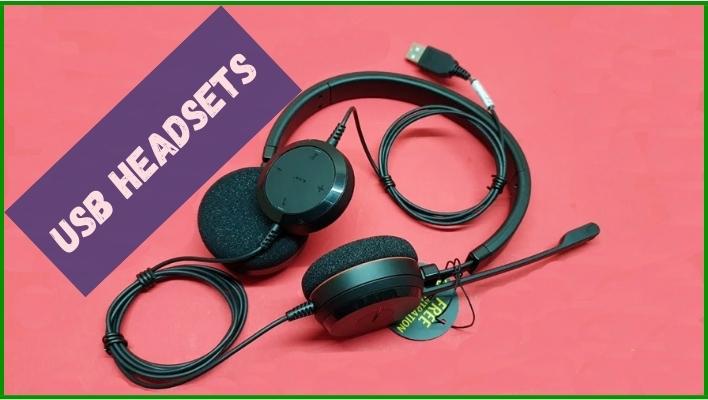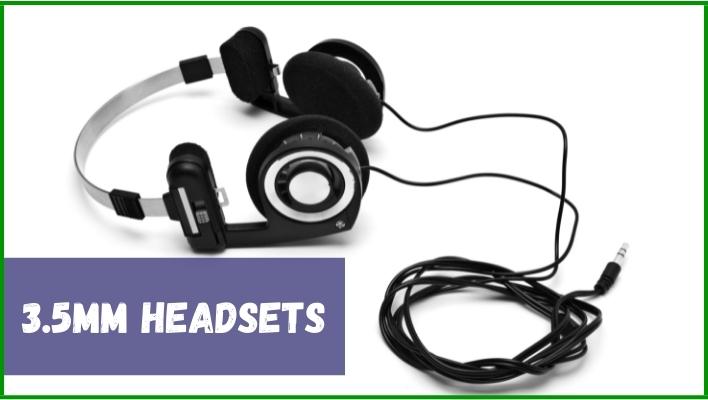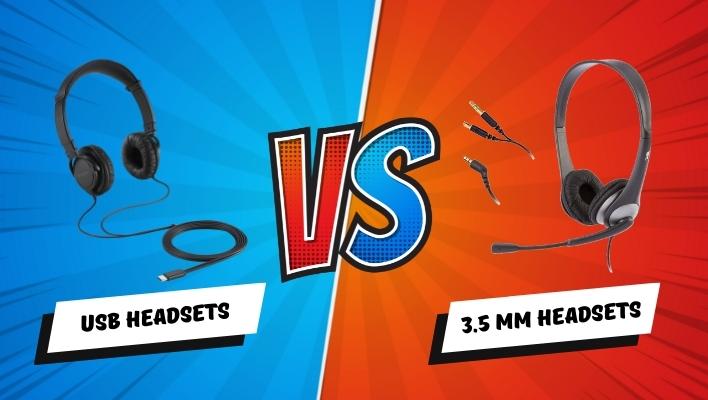The importance of audio in the day-to-day life of every human can’t be overestimated. From listening to music on the subway to watching a movie during lunch, we all have that me-time that is enhanced by the various audios from our multimedia platforms. However, there is one guardian that determines the quality of the audio we can get: the audio jacks.
No one here needs an introduction to the function of audio jacks, we suppose. Moving on, It’s easy to see why so many people are confused about the different kinds of audio jacks. While there might be quite a few, this article will examine two of the most popular options: the 3.5mm jack and the USB connectors. The 3.5mm jack has been the go-to option for many years. Howevere, with the emergence of the USB headsets and its supposed advantages, many began to question which is the better choice.
If you belong to this category, then this article is perfect for you. We will examine both options, their advantages, disadvantages, and the differences in their operation.

What are USB headsets?
USB headsets often include a microphone and are used with computers and other devices through a USB port. This technology is commonly used for online gaming, phone conversations, and computer-based video telephony. Typically, the computer does not require an analog microphone input or speaker output if the headphone is connected using USB connection. Instead, it identifies the USB headphone as soon as it is plugged in and installs the necessary drivers. USB headsets often contain their own volume and microphone controls. Most USB hedasets also have a button that allows you to mute or hold a call on your own. Typically, user installation is not necessary.
Features of USB headset
The following features are peculiar to USB headsets.
1. Built-in Sound card
The first thing you should know about USB headsets is that they use a built-in sound card. This means you don’t have to worry about compatibility with other devices or sound cards, as they have their own built-in sound card.
2. Voice recognition
If you use your headset for many phone calls, you may want to look for a pair with a built-in microphone. This can be extremely helpful if you want to use your headset to listen to music and talk on the phone, as it eliminates the need to switch between devices. With a built-in microphone, you can simply press a button to switch between audio sources, making it much easier to multitask.
3. Noise cancellation
If you often find yourself in a noisy environment while listening to music or video, you may want to consider a pair of USB headsets that include noise-cancellation technology. This feature could make the headsets a little pricier, but it can be a good investment if it helps you get the most out of your audio content.

What are 3.5mm headsets?
The 3.5mm is the older option out of the two. The 3.5mm dimension refers to the diameter of the pin which connects the audio jack to the headphones. The level of sound transmission a 3.5mm headset has largely depends on the number of connector rings around its pin plug. If it has 3 rings, it can allow both audio sounds and microphone output. However, if it has only 2 rings, it would only work for audio.
Also, unlike the USB headsets, the 3.5mm headsets depend on the sound card of whatedver device you plug them to. When you connect an analog 3.5mm device to your computer, the digital signal is converted to analog by your computer’s sound card or a chip incorporated into the system. If your PC has a solid onboard sound card, you may use a 3.5mm analog headset to access all of its audio functions.
Features of 3.5mm Headphones
3.5mm headsets typically have the following features.
1. They depend on your device’s sound system
3.5mm headphones lack sound processing systems like USB headphones; hence, they rely on the sound processing system of your device. When you attach a 3.5mm headphone to your computer, an analog conversion takes place in the sound chip embedded into the motherboard. This dependency on your computer’s sound card means the sound quality depends on your computer rather than the headphones.
2. Audiophile standard
In addition to microphones, higher-end 3.5mm headsets provide audio of comparable quality to premium headphones. Some versions have an audio quality that rivals that of the comparable USB headphones on the market.

Differences Between 3.5mm Headsets vs the USB Headsets
USB headsets provide a variety of features to enhance their operation, such as call answering, volume control, and greater sound quality without the requirement for a sound card. Although 3.5 mm headsets can also provide similar features, USB headsets are often quicker and more dependable.
You will have a better experience using USB headsets with a microphone for dictation and voice recognition.3.5mm headsets are prone to noise and distortion, while USB headsets are not. Also, when trying to choose a gaming headset, the USB headset is better due its lower noise distortion and richer sound processing.
However, despite their many advantages, USB headsets have some disadvantages. Notably, wireless USB headsets often cost more than 3.5mm analog headsets. Furthermore, many people prefer the sound quality of a 3.5mm headset due to the cable’s superior ability to carry sound waves.
Conclusion
At the end of the day, while one may not be that drastically better than the other, the USB headset tends to edge out its 3.5 mm counterpart on most fronts. However, if you go for quality products for either category, other things being equal, you’re sure to get your money’s worth.
